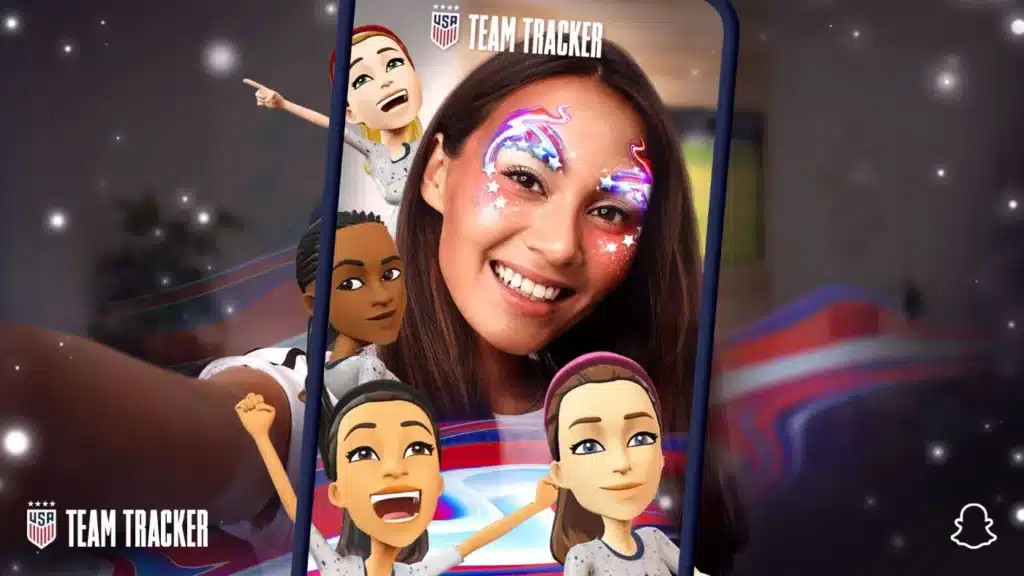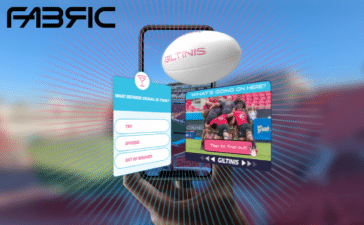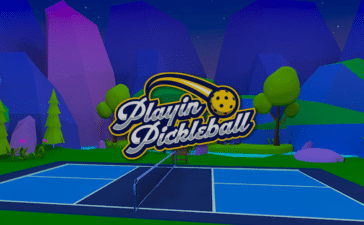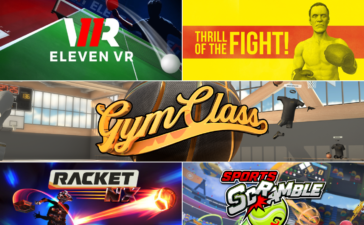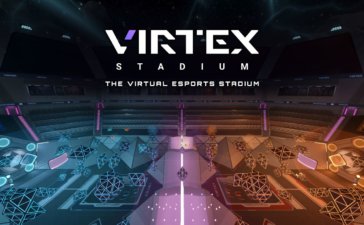Pickleball is the new court sensation that’s sweeping the nation, and it didn’t take long for someone to bring it into VR. How does someone who’s a VR veteran, but green on the pickleball court take to the game? We’ll find out in this review of Playin Pickleball.
“Pickleball,” You Say?
If you know what pickleball is, just skip ahead a little bit. If you need a little explainer, here’s a very little explainer:
Pickleball is kind of like tennis, but played with a ping-pong paddle and a whiffle ball. It can be played in singles or doubles format. That’s it from a thousand-foot view, but there are a lot of more specific rules going over how the ball can be played, from where, and how it has to be served, as well as the points system.
As becomes apparent over the course of this review, I have never played pickleball in real life. And, after having played a few (and won even fewer) games in VR, I still don’t really understand a lot of the rules. But, that doesn’t mean that it’s not fun.
Getting Started With Playin Pickleball
The basic mechanics of how pickleball works in a VR game are explained in an automated tutorial as soon as you start up Playin Pickleball for the first time. Let me just say here, that you owe it to yourself to make it through the tutorial.
You can’t skip this opening tutorial, and you can’t fail out of it either. One of the challenges is landing three serves within a designated area of the court and if you want to leave the tutorial you’ll do it if it takes you a thousand tries. And it might have taken me a thousand tries.
This initial tutorial tells you how to do things like spawn a ball and move around the court, but it doesn’t do anything to tell you how the game of pickleball actually works. This is a blessing for people who already know the rules of the game from playing in real life, because they don’t have to sit through an avatar explaining the rules to them.
If you aren’t familiar with the rules, you can choose to move straight from the initial tutorial into a short explainer on the court, the points system, and some of the other more intricate rules. However, this second tutorial is optional so you can skip it if you already know the rules.
Whether you’re about to play your first match or your one-millionth match, you can also access training exercises from the main menu that help you practice skills like serving and just hitting the ball. The training exercises pit you against the merciless pitching machine from the first tutorial, but you can also practice by playing against AIs on three difficulty settings.
Gameplay
So, how is Playin Pickleball’s gameplay?
Physics
I know that I said that the tutorial was torturous. But, I’ve been around VR long enough to know that that’s because I haven’t been around paddle sports at all. The physics of Playin Pickleball are out of this world.
I imagined that the paddle would essentially be a pong paddle that the ball either hit or it didn’t. This is far from the case. The ball behaves differently based on where it strikes the paddle. This includes wild ricochets if the ball hits the edges of the paddle.
While this can make the game more challenging at first, it also makes it a very realistic experience. I later learned that the flat sides of the paddle are actually textured so that advanced players (more advanced than me) can deliberately put a spin on the ball by glancing it just right off of the paddle’s surface.
Display and Avatars
Playing the Playin Pickleball on Quest 2 (review) via App Lab, the game automatically uses your Quest avatar. If you want to change your outfit into something a little more sporty, a menu option in the game takes you to the Quest avatar editor without closing the game.

The environment, including the three different courts, provides a good visual home for the Quest avatars. The graphics are cartoony enough for a cohesive aesthetic, but realistic enough to make gameplay easy and enjoyable.
Movement and Mechanics
Playin Pickleball allows for three movement modes.
Manually running lets you move via the joysticks. It provides the most precise and smooth movement around the court, but also means another control to keep track of that may be too challenging for new players.
Automatic running moves your avatar smoothly into the path of the ball. This setting feels natural but some people who experience motion sickness in VR may find it too disorienting. (For the record, I often feel motion sickness after extended VR sessions, but this is still my favorite setting and I didn’t have any problems using it over multiple consecutive matches in a session.)
Automatic teleport places your avatar in the best place to hit the ball based on its trajectory. This option feels less natural than the running options but may be more comfortable for players subject to motion sickness in VR.

In any movement mode, players can press the left joystick to immediately move to “the kitchen” – a smaller field-of-play on either side of the net where short-range volleys take place.
A final note on gameplay: Even with teleport modes, you have to move your arms – including serving from below the waist and returning above your head. In my review of The Thrill of the Fight, I mentioned that you can get away with a pretty small play area. That is not the case with Playin Pickleball. You don’t need a full-sized court to play in, but you’ve got to give yourself room.
Finding Games Anytime
In addition to the training modes, Playin Pickleball has singles and doubles matches available at any time. These include free play modes so you and a pal can knock a ball back and forth without worrying about the score or even whose serve it is.

Friends can invite you to join their games, or you can team up with a friend to form a party. If you have enough friends online at the same time, you can play in closed games with each other.
If you don’t have enough friends online at once, you can look for open matches with random online players. In the event that there aren’t enough players online at a given time (which does happen in the game, as Playin Pickleball is still fairly new), live players are paired with AI bots.
An Amazing Gaming Community
The best way that I know of to find games, and to get into Playin Pickleball in general, is through their Discord server. As soon as I joined the Discord server, other players sent welcoming messages. One even scheduled a time for some free play during which he helped me understand the rules and mechanics better than any of the tutorials did.
A special page in the Discord server allows players to fill in information about themselves, including their levels of pickleball experience and what regions they live in. This automatically assigns players to different channels where players can learn about upcoming Playin Pickleball tournaments and see or schedule pick-up games.
The first online doubles game that I played included my new friend from Discord as well as two other players that I had never played with but that seem to be regulars at that particular time of day. Despite having only put an hour or so into Playin Pickleball since surviving the tutorials, I was able to play competitively with others. And the other players are great sports!

It helps that many of the basics of the game are automated. For example, despite my time in the app, I still don’t really understand how the serve rotation works. But, a message appears above my off hand, letting me know that it’s my turn to spawn a ball and start a round. That means that my new (and patient) pickleball friends don’t have to tell me it’s my turn when I can’t keep track.
Get to Playin!
You can learn more about Playin Pickleball through the website, which includes video explainers, links to their Discord channel and other social media, and more. If you want to get straight into it, you can purchase the game from the Meta Quest App Lab for $19.99.
![]()



